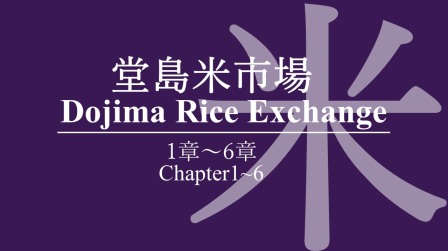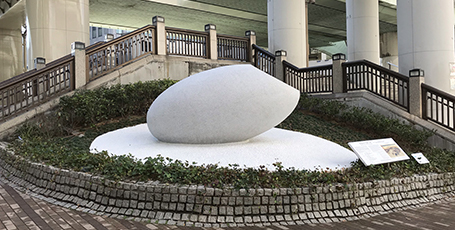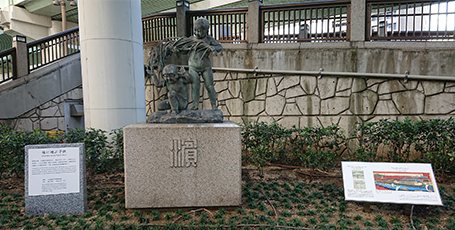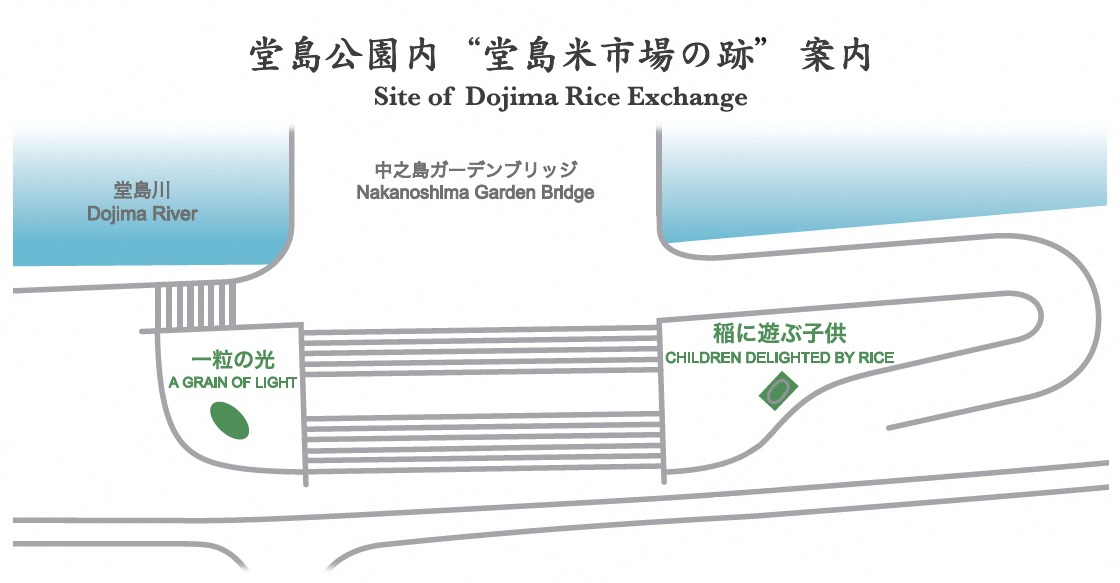Dojima Rice Exchange
- World’s First Futures Exchange -
In the Edo period (1603-1867), most of the rice collected by feudal domains as tax was transported to major cities, such as Osaka. Feudal domains sold tax rice stored at kurayashiki (combined warehouses and residences) around Nakanoshima to rice brokers through auctions and issued rice bills (notes promising to exchange for rice) to successful bidders. The rice bills, including those to exchange for rice to be delivered to Osaka, were actively traded.
In 1730, the Tokugawa shogunate authorized a spot market to trade rice bills and a futures market to trade representative brands of rice on a book in Dojima. This marked the inception of an official market known as Dojima Rice Exchange, which was equipped with a membership system and clearing function similar to exchanges in the modern era and is widely known as the forerunner to organized futures exchanges in the world.
The rice price formed at Dojima Rice Exchange was disseminated by couriers or flag signals across hundreds of kilometers, reaching the capital and other major cities.
Many of the trading rules and practices developed in Dojima were carried over to commodity, equity, and financial futures exchanges afterwards.
Chronology
- Early 17th Century
- Rice market opens in front of the shop of wealthy merchant Yodoya (south side of current Yodoya-bashi)
- Late 17th Century
- Scheme is developed to trade tax rice with rice bills issued by feudal domains
- Around 1697
- Rice market is transferred to Dojima
- 1730
- Tokugawa shogunate officially authorizes trading at Dojima Rice Exchange
- 1811
- Trading at Dojima Rice Exchange reaches its peak
- 1869
- Meiji government bans trading at Dojima Rice Exchange due to steep rise in price of rice
- 1871
- Dojima Rice Exchange is revived to activate rice trading
- 1939
- Osaka-Dojima Rice Exchange (successor of Dojima Rice Exchange) is abolished under the controlled economy
DOJIMA RICE EXCHANGE
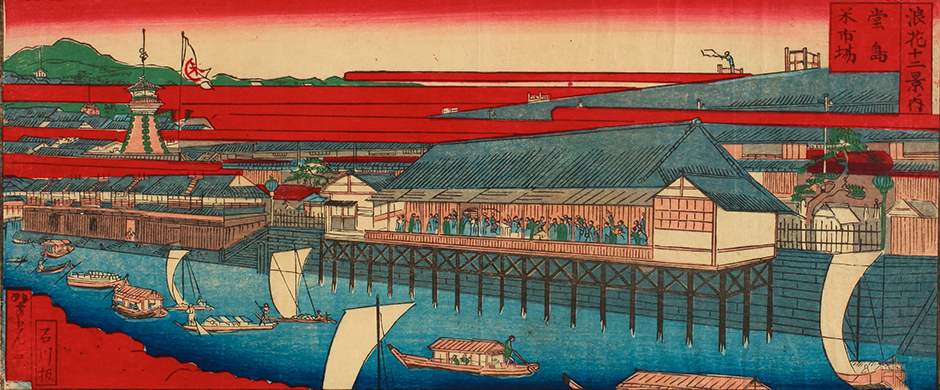
Painting by Yoshimitsu (1850-1891) Property of Osaka Prefectural Nakanoshima Library
The offices of Dojima Rice Exchange built over the Dojima river: upper right depicts a scene where a flag is used to disseminate the price of rice.
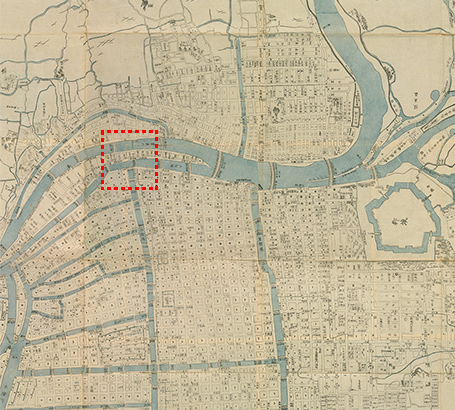
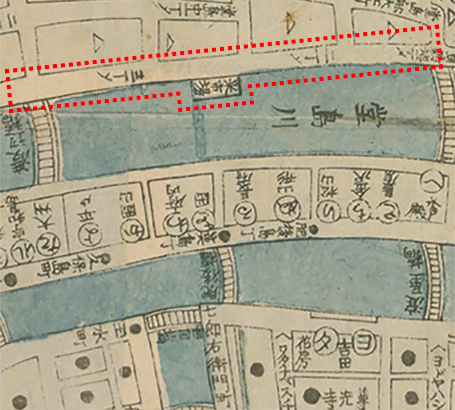 Enlarged View
Enlarged View
Maps of Osaka (1806) Property of National Diet Library
The north bank of Dojima river reads "Kome Ichiba (Rice Exchange)". Trading was conducted on the roads around Dojima Rice Exchange.
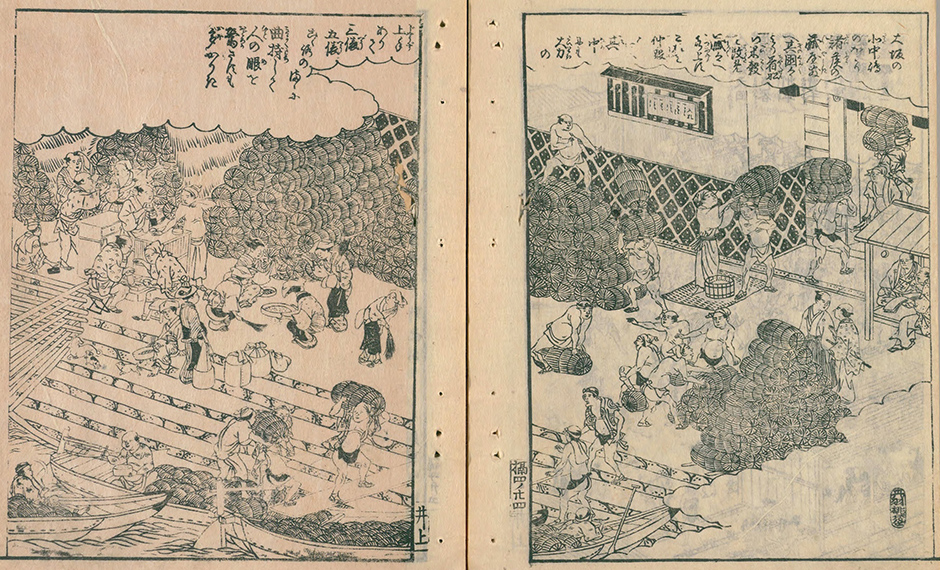
Kurayashiki (1798) Property of National Diet Library
Bales of rice were brought to kurayashiki (warehouse-residences) around Nakanoshima from all over Japan.
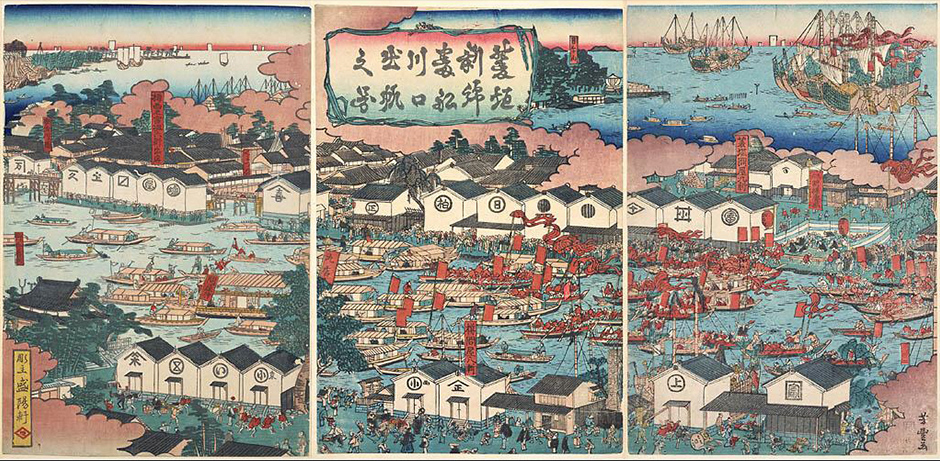
Osaka in the Edo period Painting by Yoshitoyo (1830-1866) Property of Osaka Prefectural Nakanoshima Library
There were a number of kurayashiki (warehouse-residences) surrounding riverbanks in Osaka with many ships voyaging back and forth. Osaka would later be known as the "City of Waterways".


